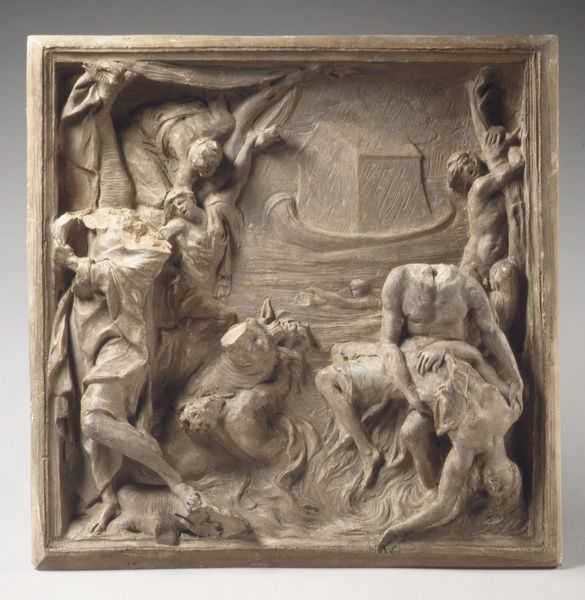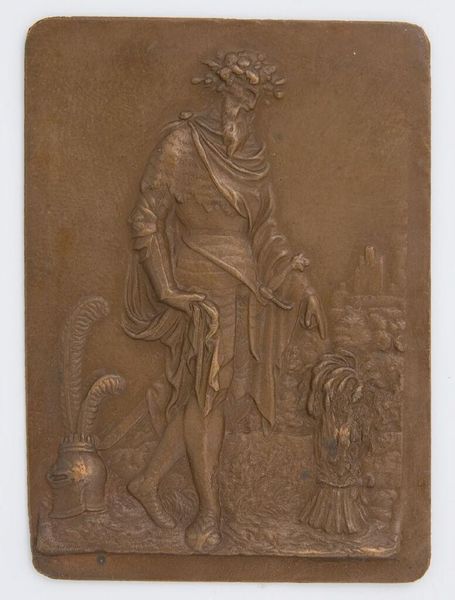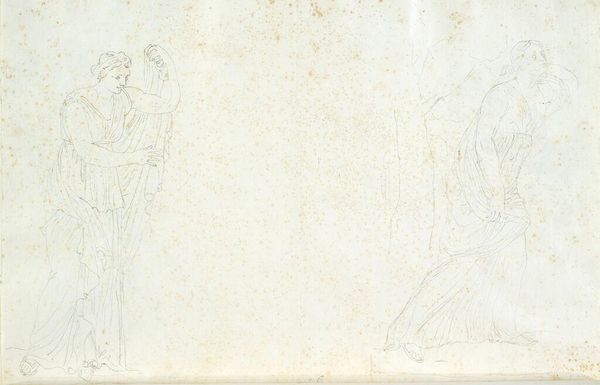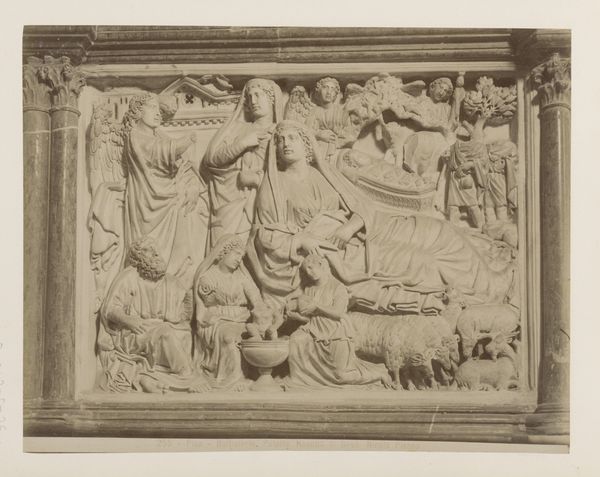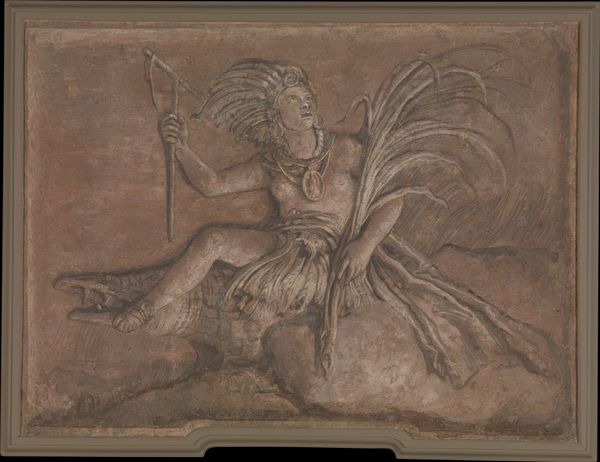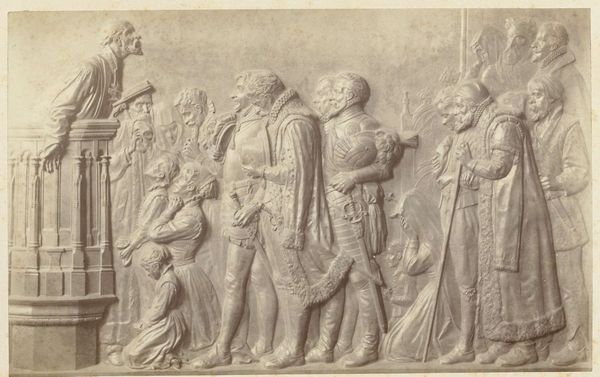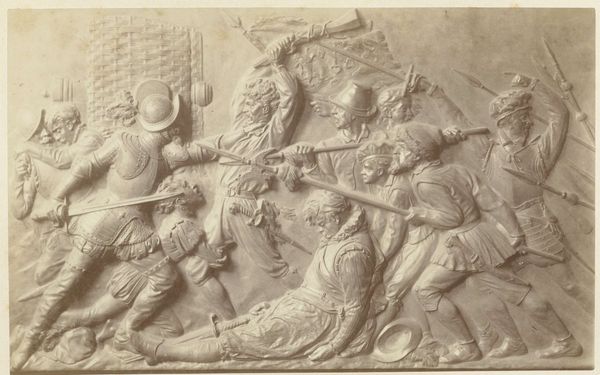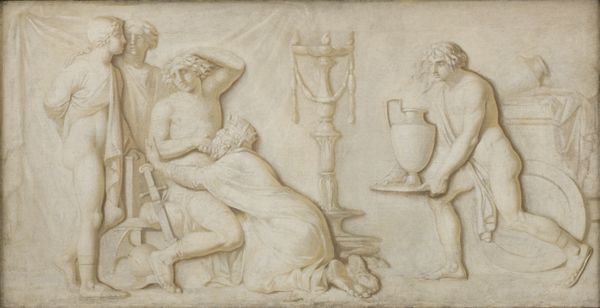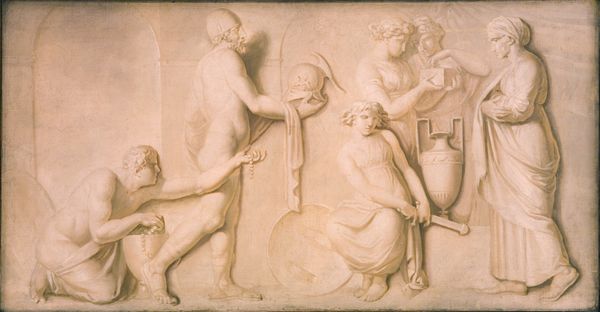
Den hollandske oberst Henry Drevon, iført romersk feltherredragt 1785
0:00
0:00
relief, sculpture, marble
#
neoclacissism
#
relief
#
charcoal drawing
#
sculpture
#
history-painting
#
charcoal
#
marble
Dimensions: 54 cm (height) x 59 cm (width) x 4.5 cm (depth) (Netto)
Editor: This is a marble relief from 1785, titled "The Dutch Colonel Henry Drevon, Dressed as a Roman Field Marshal," by C.F. Stanley. There's a palpable sense of... stoicism here. How do you interpret this work? Curator: Immediately, I see a deliberate engagement with power, identity, and representation within the late 18th century. We're not just looking at a portrait, but a carefully constructed performance of masculinity and authority. Notice the Roman garb, the sword, the architectural elements… These are all signifiers, deployed to connect Drevon to a lineage of power and military might. What does it tell us about the colonial project of the Dutch, seeking legitimization through an appeal to Roman antiquity? Editor: So, the classical imagery is almost like a costume – a way to borrow authority? Curator: Precisely. Neoclassicism itself was a powerful aesthetic tied to revolution, but also empires. It's fascinating how it could be used to represent ideals of civic virtue, but also to cloak colonial ambitions. The text, while partially obscured by the marble, also gives us another layer to understand how power, and by extension happiness, is perceived. And the positioning within a pastoral setting almost signals an appropriation of the land; doesn’t it? Editor: That’s fascinating; I hadn't considered the colonial aspect so directly. I was initially focused on the figure itself, but framing it within that context makes it so much richer. Curator: The real power of art history lies in these contextualizations. It's about peeling back the layers of meaning and recognizing the complex historical and social forces at play. It changes the way you see the work.
Comments
No comments
Be the first to comment and join the conversation on the ultimate creative platform.

